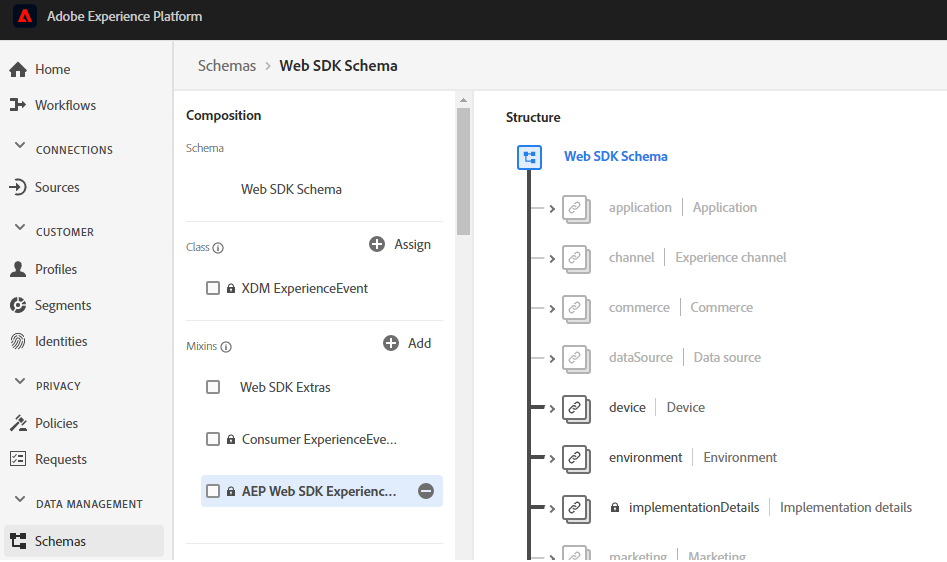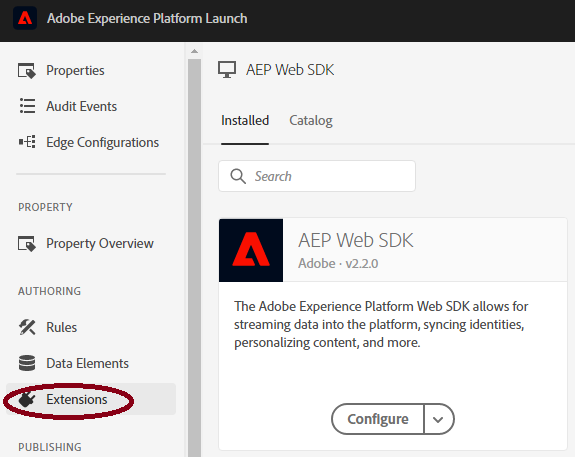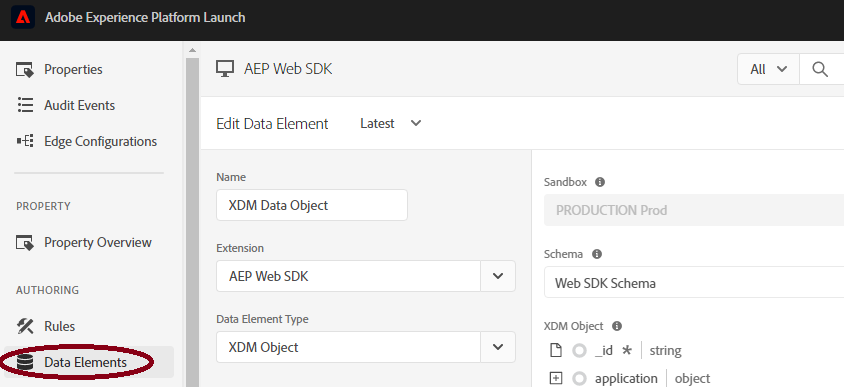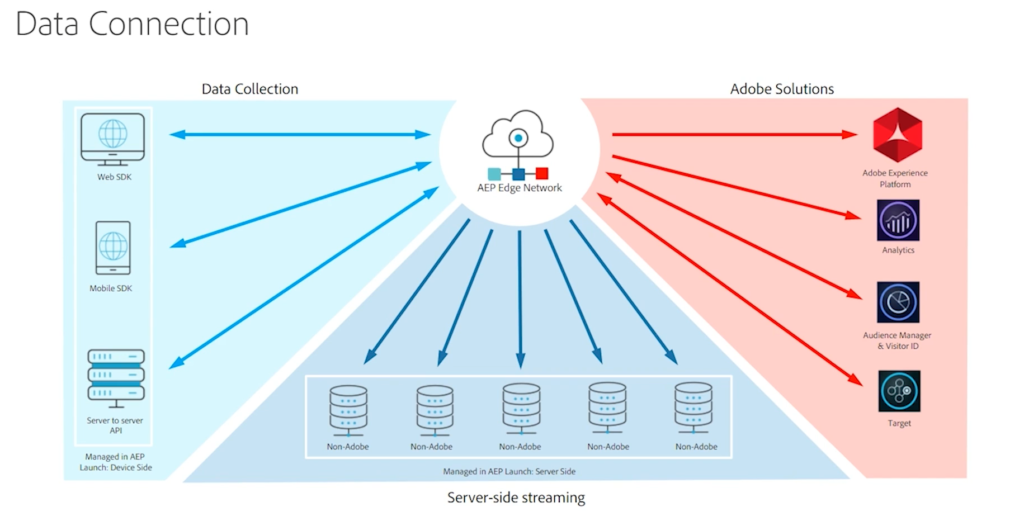
Lately we have been having an initial look at the new Adobe JavaScript Web SDK (also being referred to as alloy.js) for the Adobe Experience Platform, which actually offers a lot more than what the name implies.
This is the first in a series of articles we intend to share regarding various aspects of the Adobe Experience Platform.
Key features
So what are some of the key features on offer…
Feature: A single JavaScript tracking library to run from your tag management system (not just Adobe Launch) for running the following Adobe applications:
-
- Adobe Analytics
- Adobe Target
- Adobe Audience Manager
- Adobe Experience Cloud ID Service
Our initial thoughts:
This is certainly a big goal to strive for, to replace each of these individual tool’s libraries which have evolved over many many years will be challenging. The benefits of a smaller, faster library and a standardised and tool agnostic data collection approach is certainly appealing but the potential migration task for many existing companies may be quite challenging*.
* In fairness, this is definitely not a mandatory upgrade and unlikely to be made mandatory any time soon.
Feature: Include user privacy and associated consent at the core of the library so that it is does not need to be refactored in later as an afterthought.
Our initial thoughts:
This is a wise decision from Adobe, as it’s just an absolutely obvious statement to make but the requirements and expectations in this area are only going to increase in coming months and years.
Feature: One type of network call (beacon) to handle many use cases with increased server side configuration options
Our initial thoughts:
This is a really significant step forward, it is clearly the way of the future (if we aren’t in fact already there), whereby your site initiates one (or very few), tool agnostic data calls (beacons) to a server (with privacy considerations factored in) where you can then subsequently configure your data destinations and personalisation actions.
A little more detail about how it works…
The mechanics around installing and configuring the Web SDK are still quite clunky. But on a positive note, it has provided us with further exposure to the Adobe Experience Platform (AEP).
There are many new concepts to comprehend in this landscape that the Web SDK is opening up, and some of them are not immediately intuitive, however given where its all heading, it is worth persevering, and here are some of our initial thoughts…
Edge Configurations
What is it?
A new area within Adobe Launch to configure your settings relating to where data from the Web SDK will be sent.

Initial thoughts
-
- The first key point is that this is not the AEP itself, but instead it is a set of server side configuration options, defined in Adobe Launch, of what tools you want your Web SDK network beacons to be sent to.
- What is quite easy to understand is that this is where you can define your Adobe Analytics, Target and Audience Manager instances, report suite and environment ids.
- The two more interesting configuration items available in this Edge configuration are:
- ability to configure an Adobe Experience Platform destination – presumably so that you can further utilise your data in the platform itself
- ability to configure an Adobe Launch server side environment, something we have not explored in detail as yet, but again this speaks to the ability to capture data once on site and then map specific attributes to specific tools via server side configuration, in this case presumably opening up the ability to trigger 3rd party integrations such as Google and Facebook marketing pixels.
Adobe Experience Platform configuration
What is it?
As mentioned above, the Edge Configuration, is not actually the Adobe Experience Platform (AEP). However the AEP does in fact still have a critical role to play. At minimum, to get the Web SDK up and running, we were required the configure following inside the AEP:
-
- Data Schema (XDM) – this is absolutely critical, as it’s the underlying building block for the Web SDK to send data into both the AEP platform and the specific installed tools.
- Source Connection – HTTP Streaming inlet – this enables data to be received in the AEP
- Dataset – as the name implies, this provides ability for the data received from the Web SDK to be stored and actioned/processed within the AEP platform.

Initial thoughts
The role of the schema is pretty clear in that the data you send in via the Web SDK must adhere to a predefined schema. Although there are additional concepts to understand here as well, including data classes and mixins. In defining a schema, there are options for a mixture of standard (out of the box) and custom instances.
As the underlying backbone of the entire AEP, this is an area that will require careful and clear planning to ensure the full benefits of the platform can be realised.
Launch extension and associated data elements
What is it?
As mentioned earlier, the new web SDK is essentially a new tracking library which needs to be installed into your chosen tag manager. We have trialled the Web SDK within Adobe Launch, and in Launch, Adobe have provided an extension to add to your web properties to utilise the new library – this is very straightforward to add.
Where it gets more complicated, is in working out how to map data points from your site (i.e. page name) to the relevant tools (i.e. Adobe Analytics). The primary step is to link your AEP data model (XDM) to an Adobe Launch data element.
The secondary step relates to when you want to make a beacon call, and at this step you must add the AEP extension to one of your Launch Rules which will subsequently refer to these custom data elements.



Initial thoughts
It definitely feels like this process will evolve over time because as it currently stands you could end up needing a new XDM based data element (which in turn refers to multiple other data elements) for each different scenario on your site – it could easily get quite cumbersome.
The other process which will likely receive some ongoing enhancements is the ability to map non-standard data elements to Adobe Analytics dimensions (props and eVars). Currently this requires:
-
- a combination of custom mixins in your AEP schema,
- the need for Launch data elements outlined above, and
- configuring processing rules in the Adobe Analytics Admin console

Data flow from SDKs to applications - Source Adobe
What’s next…
We have largely focussed on the ability to get the Web SDK up and running and ensuring we can send some data to Adobe Analytics. There is much more to explore specifically relating to Adobe Target and Audience Manager, along with the various Experience Cloud Id service options and scenarios.
The new library requires new debugging methods, and the concepts around server side mapping of data to multiple tools also presents new challenges around debugging tool specific issues. All of this will take time to evolve.
One impressive thing is the transparency in which all of this is being developed under.
For example, this publicly available project on github provides clear visibility of a range of features that are in place today in the native Adobe libraries – and the current state of those features within in the Web SDK.
https://github.com/adobe/alloy/projects/5
Summary
The techniques and concepts on display with the Web SDK demonstrate that Adobe are well and truly preparing for the future of how data and personalisation technology will be implemented and utilised. The goals are big and it certainly looks like they have made a great start. There are many new concepts to learn and no doubt there will be challenges ahead with moving to the new technology, but it offers the potential of a significant step forward for both end users and those of us who get to work in this space every day.
Interesting in trying this out for yourself…
Checkout this link as a starting point:
Adobe Experience Platform Web SDK Launch quick start guide

Recent Comments